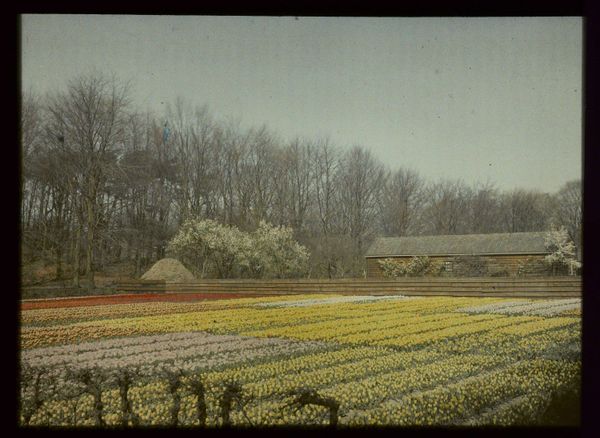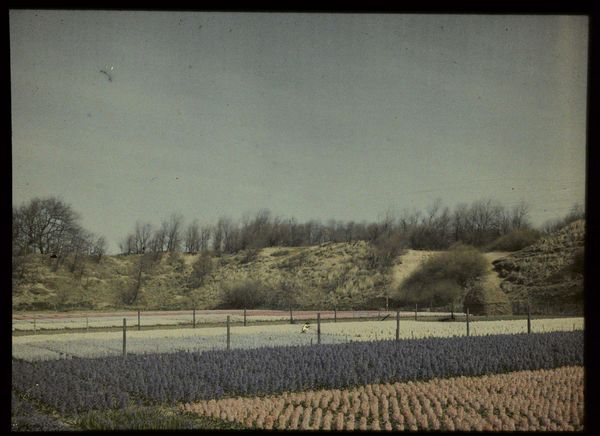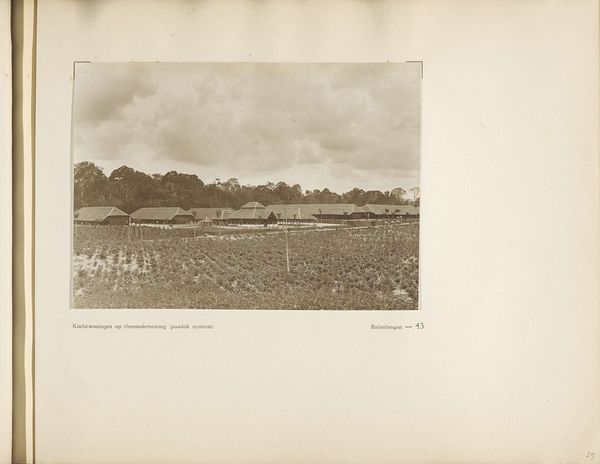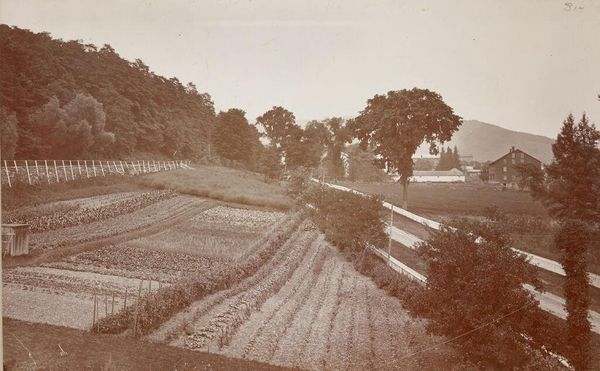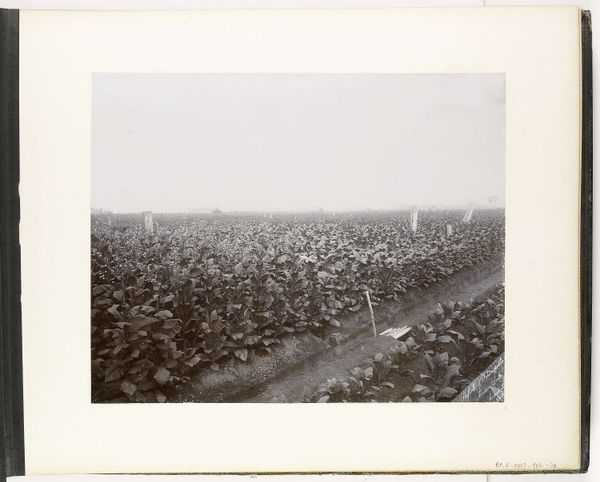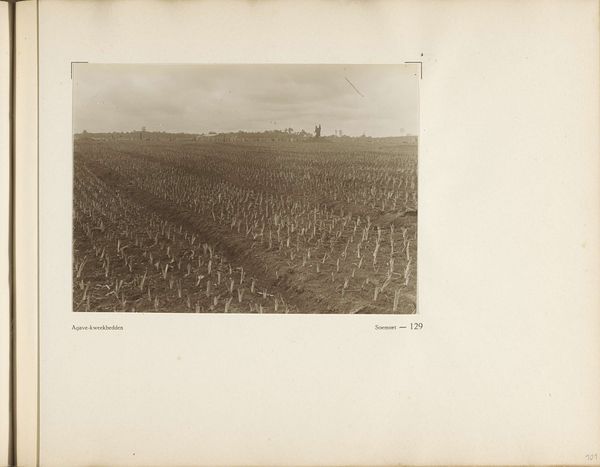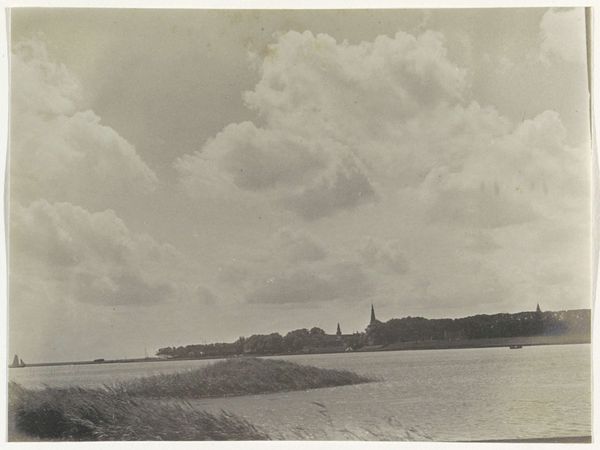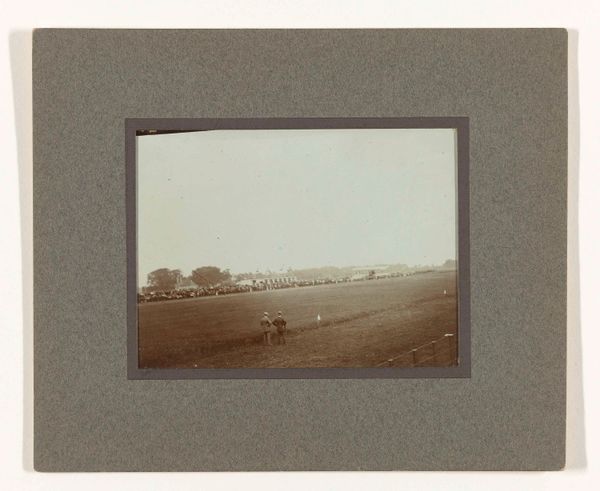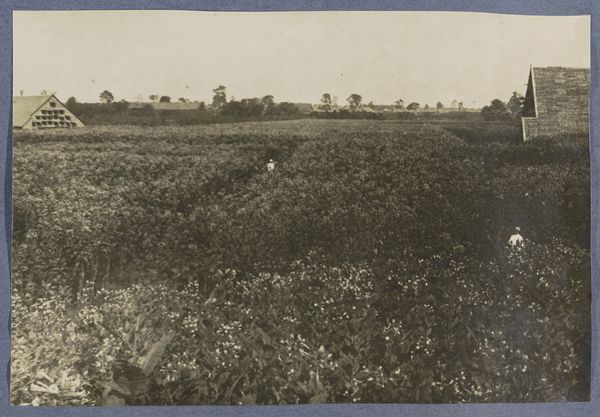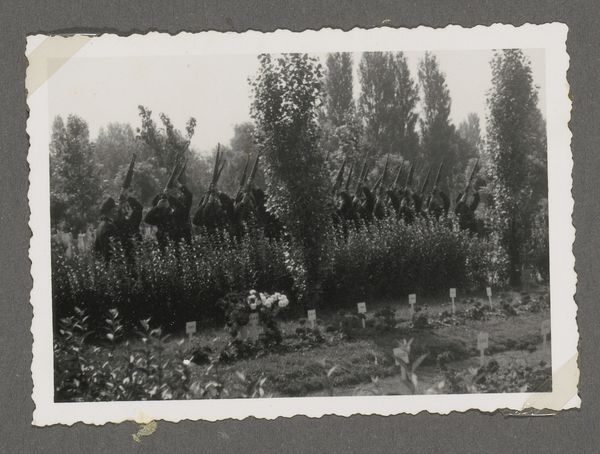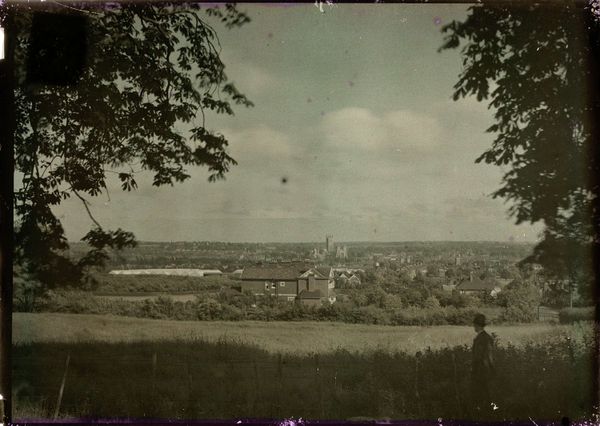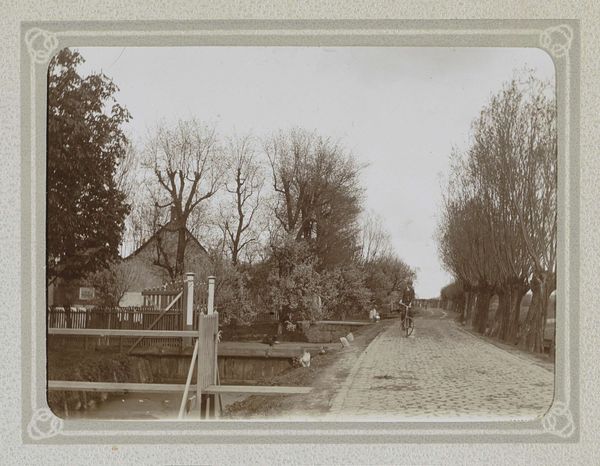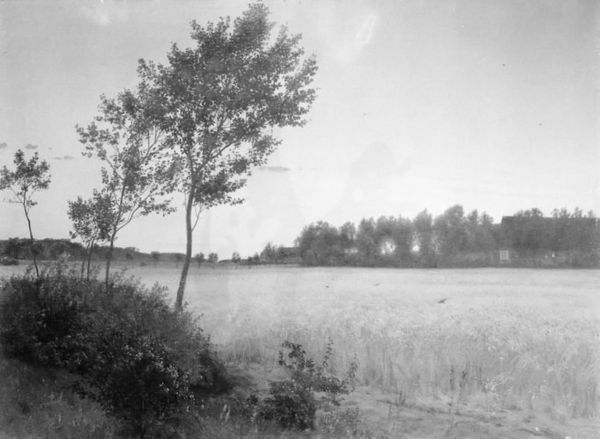
Gezicht op een veld met hyacinthen aan de Ramplaan te Overveen 1907 - 1930
0:00
0:00
Dimensions: height 88 mm, width 119 mm
Copyright: Rijks Museum: Open Domain
Editor: So, this is "Gezicht op een veld met hyacinthen aan de Ramplaan te Overveen," created sometime between 1907 and 1930, and housed here at the Rijksmuseum. It looks like a photo, showing a field of flowers under a rather gloomy sky. What strikes you most about this piece? Curator: For me, the interesting aspect lies in the work and technology behind creating this image, especially during the early 20th century. This wasn't just snapping a quick picture; it was a deliberate process of using photographic materials to capture a very cultivated, and I'd argue, commodified landscape. Think about the labor involved in creating these precisely arranged flower fields, and then in capturing them through early color photography techniques. Does that reframe how you see it? Editor: It does. I was just looking at the pretty colors, but now I'm considering the economics of flower production and the photographer's role in presenting that to an audience. So, you see it as documenting, and maybe even celebrating, a certain kind of agricultural industry? Curator: Exactly! And notice how the composition itself mirrors this sense of order and control. The neatly arranged rows of flowers are almost like products on display, suggesting the taming and ordering of nature for consumption. It makes you wonder about the social context – who owned these fields? Who benefitted from their cultivation? Photography, then, becomes a tool not just for representation, but for reinforcing certain social and economic structures. Editor: I hadn't considered the fields themselves as being so deliberately constructed. I just took them as "nature". Curator: Precisely. This changes our understanding from the Romantic vision of landscape as "untouched" to understanding the processes of production that give rise to even our view of nature. What do you take away now? Editor: It's made me consider how "nature" is very rarely "natural," and this image, beautiful as it is, hides a lot of human intervention and labor.
Comments
No comments
Be the first to comment and join the conversation on the ultimate creative platform.
